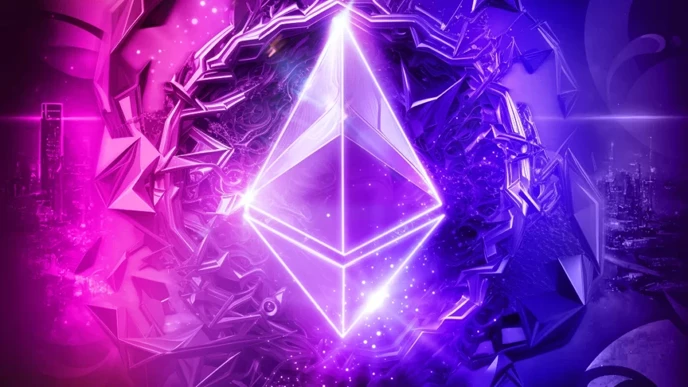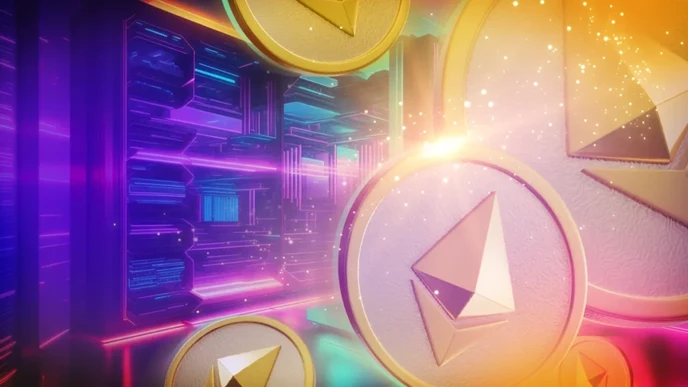Complete List of all 19 Ethereum Hard Forks

Ethereum isn’t a blue-chip cryptocurrency for nothing. Few investors know about the many forks that set the blockchain where it is today. And if it wasn’t because of its devoted community, we would still be waiting for The Merge today.
Sure, Ethereum brings a lot of innovation, but so do other networks. What sets it apart is the extensive testing done to design the best possible developer blockchain. The Merge might sound like a big step forward, but it’s really the result of countless smaller steps. Thousands of proposals over the years, and one fork after another.
Here’s the evolution of Ethereum, starting from beta until the post-Merge version, as well as its direction for the upcoming Ethereum 2.0.
What is an Ethereum Hard Fork?
Ethereum is a public blockchain. Decentralized, autonomous, immutable. While there are multiple teams working on its development (founders included), no one in particular owns Ethereum.
A good example of this is the Internet. Many companies provide Internet connections, website software, and online services. But there’s no server that singlehandedly controls the Internet. If you want to shut down the Internet or change its software, you’d need to change every single device node.
Ethereum follows a similar logic. An ethereum hard fork is an important software update that divides the blockchain in two. Those who don’t update the blockchain software stay in the old version while those who do move to the newly forked blockchain.
Like the Internet, new blockchains need enough nodes to be secure and decentralized. Once enough users update, the Ethereum fork goes live. Developer teams fork the blockchain either to upgrade Ethereum or solve vulnerabilities (A bit like updating from Windows 10 to 11. The same happened on the transition from Web1 to Web2, and currently to Web3).
Ideally, every device would abandon the old version and move to the new one. That never happens because no one can force every node to update, and not everyone will want to. Hence why Ethereum forks temporarily start with fewer nodes (e.g., +75% of the initial number), which lowers its security. But doing nothing isn’t safe either, as people eventually switch from outdated versions, which will lose nodes and security.
The “unforked” version of Ethereum is Ethereum Classic (ETC). It’s not nearly as successful for the mentioned reasons: it had lower adoption and increased vulnerabilities. Also note that you can’t stake ETC, as it’s proof-of-work (PoW) and doesn’t inherit Ethereum’s updates.

List of Ethereum Hard Forks
Ethereum isn’t a blue-chip cryptocurrency for nothing. Few investors know about the many forks that made the blockchain what it is today. It’s not necessarily the most innovative, but definitely, the one that has tested the most, with thousands of proposals coming from the developer community. Here’s its evolution, from the beta version until post-Merge Ethereum:

1st: Frontier
Frontier is the first ever version of Ethereum launched on July 15th of 2015. It started as a testnet with basic smart contracts aimed only at experienced developers. The goal was simple: launch Ethereum, observe, and troubleshoot.
Once the foundations were set, new updates followed just 1 month after. The actual cryptocurrency didn’t appear on most exchanges until Frontier Thawing.
2nd: Frontier Thawing
Frontier Thawing was live after reaching the 200,000th block on September 6th of 2015. It’s also called Frontier because it’s mostly bug fixes and tweaks from the previous version:
- Moving gas limit from 5K to 3M to guarantee that transactions go through
- Setting a minimum gas limit of 21K, which is still the default used today
Ethereum 2.0. goes all the way back to Frontier Thawing. It introduced the “difficulty bomb,” which one year later, would ease a transition from Proof-of-Work (PoW) to Proof-of-Stake (PoS).
Ethereum had a 60M circulating supply and stayed around $1 until 2016.
3rd: Homestead
Homestead was the first fork created after the 1,150,000th block on March 14th of 2016. It’s the second major update that applied three Ethereum Improvement Proposals (EIPs) from the developer community. It expanded with smart contract functions on the Ethereum Virtual Machine (EVM) and forward compatibility (which makes Ethereum easier to upgrade).
But those updates weren’t enough to correct all code vulnerabilities. The DAO was the first high-profile project to launch in April and fund-raise $150M in ETH. Two months later, it got hacked and lost 3.6M ETH (~$46M) on a contract exploit.
Ethereum was at $12.50 and 75M of circulating token supply until the next fork.
4th: The DAO Fork
In response to the incident, Ethereum introduced this fork to move funds from the old smart contract to a new one. From July 20th of 2016 and after block 1,920,000, anyone who lost funds could exchange 100 DAO tokens for 1 ETH. But not everyone agreed with this change.
15% of people who voted against the fork perceived it as network manipulation. They wanted an immutable Ethereum, so they created Ethereum Classic (ETC) separated from Ethereum (ETH). The founders and dev team moved to this second new blockchain.
5th: Tangerine Whistle
On October 18th of 2016, Tangerine Whistle came in response to the previous month’s DoS spam attacks. Proposals EIP-150 and EIP-158 led to this hard fork, effective from block 2,463,000. At that time, Ethereum averaged $12 and crossed 84M in circulating supply.
Tangerine Whistle wasn’t about new features but troubleshooting urgent issues. While it did mitigate those cyber-attacks (by increasing gas fees for IO-heavy operations), major upgrades didn’t happen until Byzantium.
6th: Spurious Dragon
Spurious Dragon is an expansion of Tangerine Whistle and a second response to DoS attacks. It went live on November 22th of 2016 after selling 2,675,000 with a token price of ~$10 and a supply of 85M. Four Ethereum proposals improved the protocol’s code size limit, transaction cost, state size, and security.
After Spurious Dragon, Ethereum’s development ran smoothly until the next upgrade a year later.
7th: Byzantium
Ethereum forked to Byzantium after block 4,370,000 on October 16th of 2017. By this time, Frontier Thawing’s “bomb” was steeply increasing mining difficulty. And since proof-of-stake Ethereum was far from completed, Byzantium delayed the difficulty bomb by another year and reduced mining rewards to 3 ETH. 1 ETH back then was at $330 (with a 90M supply).
This fork consisted of 9 improvement proposals aimed at code optimization, cryptography, and layer-2 development.
8th: Constantinople/ St. Petersburg
The Constantinople would occur on February 28 of 2019 after block 7,280,000. But after some discussion, the dev community decided to postpone it to correct potential vulnerabilities. Essentially, the St. Petersburg fork would draw back one proposal (EIP-1283) and replace Constantinople’s fork on the same date. It’s two forks at once, except only St. Petersburg was effective.
There were 104M ETH tokens, and the price averaged $135 until the next update announcement.
Interestingly enough, the blockchain community that once remained inflexible finally forked in September 2019: Ethereum Classic. ETC underwent the Atlantis fork, which mirrored the improvements of Spurious Dragon and Byzantium. Yet, these upgrades weren’t enough to secure Ethereum Classic as much as Ethereum, and cyber-attacks continued until 2020.
9th: Istanbul
Istanbul was scheduled for block 9,069,000 and predicted for December 8th of 2019. It would be the largest upgrade until October 2020 (Staking contracts). Istanbul contributed to Ethereum by improving DoS-attack resilience, Layer-2 solution performance, EVM gas cost optimization, and interoperability with the ZCash network.
Ethereum had a 108M token supply and a $165 average price.
10th: Muir Glacier
Muir Glacier occurred at block 9,200,000 on January 1st of 2020. It was a response to the difficulty bomb, which threatened the usability of Ethereum. This update delayed the “bomb” for a year once again to keep block times between 10 and 20s.
This wasn’t the last time they would delay, but hopefully, it would be enough to standardize proof-of-stake. Ethereum had a 108M circulating supply and a $125 average price.
11th: Staking Deposit Contract
Ethereum implemented staking after block 11,052,984 and October 14th of 2020. It was a quick yet essential update to speed up the upcoming Beacon Chain (ETH2). Users could send amounts to this contract and start staking as soon as the new chain launched.
Ethereum had a 108M token supply, and prices moved above $370.
12th: Beacon Chain Genesis
Beacon Chain Genesis required a staking minimum to secure the blockchain. This was achieved by November 2020, which led to the first block validation on December 1st. You could finally stake on ETH2 Genesis, even though Ethereum was still mining-based.
Ethereum crossed $600 in price and 112M in circulating supply. This update happened while DeFi was booming, so Ethereum saw a rapid increase in traffic and gas fees.
13th: Berlin
The Berlin update was scheduled for block 12,244,000 and predicted for April 15th of 2021. Ethereum teams implemented 4 EIPs that would improve gas costs and add new transaction types. Ethereum had a 114M token supply and $2400 average price.
14th: London
The London fork was set for block 12,965,000 and expected by August 5th of 2021. It introduced 5 EIPs that further optimized transaction fees, gas refunds, and mining difficulty. Before London, for example, there was no way to set a max gas limit. It also defined a base transaction fee, and any amount over that value would be refunded.
1 ETH averaged $2600, and there were 116M in circulation.
15th: Altair
The Altair update followed on October 27th of 2021 after epoch 74,240 (around block 13,500,000). Back then, Ethereum was working on a future “merge,” as it was still using PoW and PoS at once. The difficulty bomb would ease the transition to PoS, and Altair was the last big update needed to set an official Merge date.
Originally, Altair should have been released with London (just like Constantinople had with St. Petersburg). But mining difficulty ramped up too early, which postponed it until October. Altair was the first Beacon Chain upgrade, making it more reliable by increasing slashing penalties on inactive validators.
Ethereum had a 117M token supply and a $4,000 average price.
16th: Arrow Glacier
Arrow Glacier was scheduled for block 13,773,000 and predicted for December 8th of 2019. Like previous “glacier” updates, Arrow Glacier pushed the difficulty bomb further and mimicked the same improvements made on Byzantium and London. Ethereum had a 119M token supply and a $4,100 average price.
By now, we can deduct a few observations that will make future forks easier to understand:
- As for names, every glacier-related name (including Frontier Thawing) is associated with the difficulty bomb, also known as Ice Age. It’s called this way because it exponentially increases difficulty and block time. Its mathematical function makes the difficulty unnoticeable until a year later (give or take). Ideally, PoS Ethereum should release before the Ice Age bomb goes off, making PoW Ethereum unusable.
- After Istanbul, most forks use the name of the city that hosted the annual DevCon event.
- Until the Merge, the official Ethereum history page mixes updates from the Mainnet and the Beacon Chain. Beacon Chain doesn’t follow previous conditions, and it also uses another block counting system (epoch instead of block number).
Both Ethereum chains would remain separated for another 3 years until the Paris fork.
17th: Gray Glacier
The Gray Glacier update followed after block 15,050,000, expected by June 30th of 2022. As typical, it delayed the difficulty bomb by several months, although less than usual. It’s not a major upgrade, but an urgent one in response to a premature difficulty bump.
ETH prices fell to $1,000 while circulating supply increased past 121M.
18th: Bellatrix
Bellatrix took place on September 6th of 2022 after epoch 144,896 (around block 15,485,000). It was the second Beacon Chain upgrade and the first phase of the Merge. It’s often omitted for the second phase, as Bellatrix was just a preparation upgrade. It includes changes in the validator penalty values, expanded settings for the transition, and Merge instructions for ETH developers.
Ethereum had a 122M token supply and a $1,500 average price.
19th: Paris (The Merge)
Paris (The Merge) is the most anticipated Ethereum update. After many bomb delays and security revisions, it’s becoming official on September 15th of 2022 (after block 15,537,394). The Ice Age will come to the PoW chain, and Ethereum will finally integrate it as a new PoS network.
A common misconception is that The Merge would bring massive upgrades. That’s not the case, as the teams had already made those updates since early 2022. What we’ve seen until September is a test period to find out how sustainable and secure the upgrades were. And because there were no incidents, the teams considered it secure to finally release The Merge.
Ethereum is now on its way to becoming way more efficient thanks to proof-of-stake. As long as it’s not flooded with traffic, developers should soon notice better speeds and costs on their dApps. For many, it’s the most important upgrade since Homestead.
After the Merge, Ethereum had a 122M token supply and ~$2,000 peak. Prices consistently built up before the update, fell after it was live, and will go up again after the next announcement and before a future upgrade. Many upgrades will follow, and the Merge is just one phase of the long-term Ethereum vision.
What About Ethereum 2.0?
Ethereum 2.0. doesn’t end in the Merge. There’s a long way before the network becomes sustainable enough (and solves the blockchain trilemma).
You don’t need research to spot the competitive limitations of Ethereum:
- Many new PoS blockchains have block times below 1s. The “slowest” do 3s. Ethereum does 12s, and at best, 3s after the PulseChain fork.
- Outside Ethereum, users expect to pay pennies for transactions. The best Ethereum fees reached so far are around $10. Sometimes when there’s lots of traffic, not even $100 will do.
- Ethereum is indeed the most decentralized. But what does it take for new validators to join? 32 ETH and they’re planning to increase hardware requirements.
Once the Beacon Chain and Mainnet are merged, the next step is to catch up with three objectives:
- Ethereum sharding into 64 sub-networks to boost scalability
- Ethereum web assembly (eWASM) to improve smart contract execution
- Ethereum functionality expansion
In parallel, there are multiple upgrades going on at the same time. Namely, the Surge, Verge, Purge, and Splurge are essential for the Ethereum Roadmap to Serenity.
The last stage of Serenity shows a complete blockchain version. Ethereum 2.0. you could say.
Missed The Merge? Here’s The Next Ethereum Hard Fork
The Merge has brought great trading opportunities as well as traffic for those dApp developers that prepared for it. If for whatever reason you missed out, there’s good news. There’s an upcoming fork that could happen anytime in the few months, and it aims to quadruple Ethereum’s efficiency. That’s a block time of 3 seconds at 25% of gas fees. It’s the first fork ever to copy the full system state of Ethereum: Pulsechain.
The testnet is already live as well as a decentralized exchange (DEX, PulseX) to trace PRC-20 tokens. What makes Pulsechain different in practice is the ability to import every single asset and contract from Ethereum (ERC-20). If you added PulseChain before Testnet v2, you’ll find in your wallet a copy of all Ethereum tokens and amounts, NFTs included. Definitely one of the biggest crypto airdrops ever.
PulseChain Mainnet will launch soon, so you can still be the first users to participate.
Join The Leading Crypto Channel
JOINDisclaimer:Please note that nothing on this website constitutes financial advice. Whilst every effort has been made to ensure that the information provided on this website is accurate, individuals must not rely on this information to make a financial or investment decision. Before making any decision, we strongly recommend you consult a qualified professional who should take into account your specific investment objectives, financial situation and individual needs.

Max
Max is a European based crypto specialist, marketer, and all-around writer. He brings an original and practical approach for timeless blockchain knowledge such as: in-depth guides on crypto 101, blockchain analysis, dApp reviews, and DeFi risk management. Max also wrote for news outlets, saas entrepreneurs, crypto exchanges, fintech B2B agencies, Metaverse game studios, trading coaches, and Web3 leaders like Enjin.

Development
Knowledge
Subscribe To Newsletter
Stay up-to-date with all the latest news about
Liquid Loans, Fetch Oracle and more.
Copyright © 2024 Crave Management.
All Rights Reserved.

The LL Librarian
Your Genius Liquid Loans Knowledge Assistant




